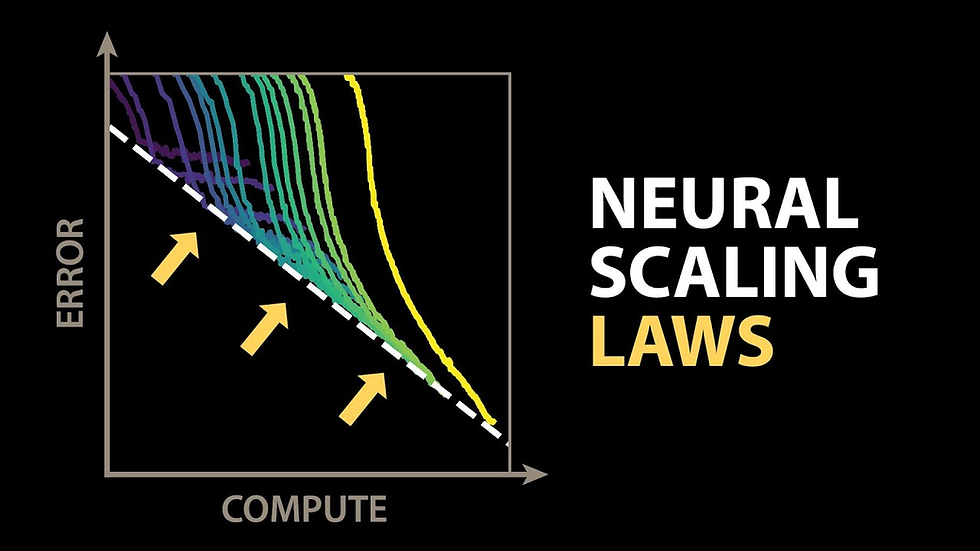Grammarly’s New AI Writing Platform: Block-First Design and Advanced Tools
- Aisha Washington

- Aug 19
- 9 min read

Introducing Grammarly’s New AI Writing Platform and Block-First Design
Grammarly Authorship is the latest evolution from Grammarly, transforming it from a grammar-checking tool into a comprehensive AI writing platform designed for writers, teams, and enterprises alike. This new platform goes beyond mere proofreading by offering an advanced AI writing assistant that supports the entire writing process—from ideation to publishing.
At the core of this transformation is the block-first design, a reimagined user interface that breaks documents into modular, manageable blocks such as paragraphs, headings, lists, and notes. This design enhances user control and streamlines AI interactions by allowing focused, block-level AI assistance. The Grammarly AI writing assistant now offers generative drafting, tone adjustment, clarity improvements, and collaboration tools that integrate seamlessly into workflows.
What Grammarly Authorship Is: Platform Overview and Design Overhaul
Grammarly Authorship overview marks a significant shift in Grammarly’s trajectory from a popular grammar checker to a versatile AI productivity platform. Its goal is to empower users not only to polish their writing but also to create content more efficiently and collaboratively. This platform integrates multiple AI-driven features that span the entire writing lifecycle—ideation, drafting, editing, and publishing—making it a one-stop solution for individual creators and business teams.
The recent Grammarly design overhaul introduces a completely revamped interface centered around modular content blocks. This approach allows writers to interact with each section of their document independently, enabling precise AI assistance tailored to specific content types or goals. The platform supports rich editing controls, including tone modulation, style adjustments, and real-time collaboration.
Grammarly Authorship offers different tiers to accommodate various user needs. Individual users can access essential Grammarly AI writing assistant features optimized for personal productivity. In contrast, business customers gain additional capabilities like team templates, enterprise-grade controls, compliance options, and enhanced collaboration suited for complex workflows.
Key Features at a Glance
Block-first workspace: Documents are segmented into editable blocks (headings, paragraphs, lists), improving focus and organization.
Generative drafting: AI-powered content creation assists with brainstorming and initial drafts.
Tone & clarity controls: Customizable suggestions to refine style and communication impact.
Multi-format support: Compatible with diverse document types including emails, reports, proposals.
Collaboration tools: Commenting, version history, shared templates for teams.
Publishing integrations: Export options for popular platforms and formats.
These features reflect Grammarly’s ambition to extend beyond grammar checks into an integrated writing environment as reported in TechCrunch.
How Grammarly’s Product Evolution Moves Beyond Proofreading
Legacy Grammarly primarily focused on proofreading, correcting spelling, grammar, and punctuation errors. The new AI-first paradigm introduces a block-based approach that enables granular AI interaction per content segment. This facilitates more creative assistance such as rewriting passages, expanding ideas, or summarizing content—capabilities absent from traditional proofreading.
This strategic shift responds to the growing demand for tools that support content creation rather than just correction. By integrating ideation and publishing workflows within a unified platform, Grammarly positions itself as an indispensable assistant throughout the writing lifecycle.
The rationale is clear: modern writers require tools that help them produce better content faster while maintaining their unique voice. The expanded toolkit of the Grammarly AI writing assistant reflects this vision, as described on the product page and launch blog.
Block-First Design Explained: UX, Technical Rationale, and Productivity Benefits

At the heart of Grammarly Authorship lies its block-first design, where documents are constructed from modular blocks such as headings, paragraphs, lists, or notes. Each block acts as an independent unit that can be edited, reordered, or enhanced with AI tools separately.
This design offers numerous user experience advantages:
Modular editing: Writers focus on small chunks of text at a time, reducing overwhelm.
Focused AI prompts: AI suggestions are scoped to individual blocks for contextual relevance.
Easier collaboration: Teams can comment or revise specific blocks without interfering with entire documents.
Reusable templates: Common structures can be saved as block templates for efficiency.
From a technical standpoint, this modularity helps manage AI prompting by limiting context windows to specific blocks rather than entire documents. This reduces hallucination risks—when AI produces irrelevant or incorrect information—and improves response accuracy. It also enhances content safety by isolating sensitive sections.
The Grammarly block-first writing surface creates a flexible, scalable environment where powerful language models work more effectively within well-defined content scopes.
Anatomy of Grammarly’s New AI Writing Surface
According to the Grammarly’s new AI writing surface user guide, each block behaves like a mini-document with its own set of AI tools accessible via inline menus and sidebars. Writers can trigger suggestions such as rewriting sentences for clarity or changing tone directly on the block.
Additional UI affordances include:
Suggestions: Inline improvements with accept/reject options.
Comments: Contextual feedback linked to specific blocks.
Versioning: Track changes at block level with rollback capabilities.
Practical advice for writers includes structuring documents into logical sections early on to maximize AI effectiveness—for example, separating background information from conclusions ensures focused assistance tailored to each part’s purpose.
How Block-First Design Improves AI Assistance and Context Handling
A key benefit of this approach is improved context handling. By limiting prompts to one block at a time, Grammarly reduces the size of input data sent to the AI engine. This keeps responses relevant and decreases the risk of errors or hallucinations common in large-context prompts.
Users can iteratively refine blocks by applying different AI modes such as:
Rewrite: Improve phrasing or clarity.
Expand: Add detail or elaboration.
Summarize: Condense information for brevity.
This workflow encourages gradual improvement rather than all-or-nothing rewriting, preserving authorial intent while leveraging AI’s creative potential effectively.
For further details on these mechanisms and user tips, see the AI writing surface user guide and analysis in TechCrunch.
Advanced AI Tools in Grammarly’s AI Writing Assistant: Capabilities and Practical Uses

Grammarly’s AI writing assistant now boasts an array of advanced tools designed to support every stage of writing:
Generative drafting: Create initial content from prompts.
Content expansion/compression: Elaborate on ideas or condense verbose text.
Style & tone transfer: Adjust voice to suit audience or purpose.
Translation assistance: Support multilingual drafting and localization.
Summarization: Extract key points from long documents.
Context-aware rewriting: Tailor improvements based on surrounding text.
These features integrate fluidly into workflows from brainstorming to finalization. For example, a user drafting an email can generate a polite opening with generative drafting, refine tone to be more assertive, then compress lengthy paragraphs before sending—all without leaving the platform.
AI Tool | Real-world Task Examples |
|---|---|
Generative drafting | Cold emails, proposals |
Content expansion/compression | Research summaries, marketing copy |
Style & tone transfer | Customer communications, creative writing |
Translation assistance | Multilingual reports |
Summarization | Meeting notes, academic abstracts |
Context-aware rewriting | Editing drafts for clarity and coherence |
These Grammarly AI writing assistant features offer tangible productivity gains tailored to diverse professional contexts.
Generative Drafting and Iterative Refinement Workflows
Within the block-first environment, users seed generative drafts by entering prompts directly in each block—such as “Write an introduction about remote work benefits.” The AI then produces text which users can edit or ask to rewrite for tone or clarity.
Best practices include:
Starting with clear prompts specifying intent.
Using iterative refinement rather than one-step generation.
Applying tone or style shifts after initial drafting to maintain author voice.
This modular interaction encourages human-in-the-loop collaboration where users guide AI outputs instead of relying solely on automatic generation.
Built-in Editing and Publishing Integrations
Grammarly extends beyond editing with integrations that streamline workflows:
Email workflows: Compose and optimize messages within Gmail or Outlook plugins enhanced by acquired Superhuman tech.
Document export: Save polished documents in Word, PDF, or web-ready formats.
Team templates: Standardize communication for sales or marketing teams.
Downstream publishing: Integration with CMS platforms for direct content upload.
These integrations enable seamless transitions from drafting through delivery—a key differentiator in today’s crowded AI writing tools market.
Responsible AI, Privacy, and Terms: Governance of Grammarly’s AI Writing Platform

Grammarly emphasizes responsible AI development guided by principles ensuring safety, fairness, transparency, user control, and explainability. These core values govern the design and operation of Grammarly Authorship’s AI components.
Regarding privacy, Grammarly’s policies detail how user data is handled: users can opt in or out of data collection used for model training; data residency options exist for enterprise customers; anonymization techniques protect sensitive information; and clear terms define content ownership and usage rights.
Governance tools include transparency reports on model behavior, granular user controls over data sharing, provenance tracking for content edits, and compliance certifications tailored to enterprise needs.
Grammarly’s Responsible-AI Principles and Standards
The company states commitments centered on:
Safety: Minimizing harmful or biased outputs.
Fairness: Avoiding discriminatory language patterns.
Transparency: Clear explanations of AI functions.
User control: Empowering users to manage data usage.
Explainability: Making AI decisions understandable.
These principles align with business standards demanded by enterprise clients seeking trustworthy technology partners.
Privacy, Terms of Service, and User Data Handling
Grammarly’s Terms of Service specify that:
User-generated content remains user-owned.
Data used for improving models is anonymized unless explicitly consented.
Enterprises may request data residency within specific regions.
Users can opt out of data collection affecting model training.
These safeguards ensure privacy protections while allowing continuous AI improvement under transparent policies.
Market Strategy, Funding, and Acquisitions: Grammarly’s Move to Dominate AI Writing Tools

Grammarly recently secured $1 billion in funding led by General Catalyst—a pivotal investment fueling its ambition to become the leading AI productivity platform in writing. This capital influx supports accelerated R&D in advanced language models and scaling infrastructure for enterprise-grade services.
Strategic acquisitions also play a vital role. The purchase of Superhuman—an email startup known for speed and smart workflows—enables Grammarly to embed email-specific AI optimizations directly into Authorship. This expands its product breadth into communication-focused workflows critical for businesses.
Together these moves position Grammarly competitively against other AI writing tools, highlighting its strengths in enterprise adoption through integrated workflows and compliance features.
Funding and Product Roadmap Implications
The $1 billion General Catalyst investment is earmarked for:
Expanding product offerings beyond proofreading.
Enhancing core AI research capabilities.
Building scalable infrastructure supporting millions of users simultaneously.
This funding underpins long-term commitments to innovation in generative tools and enterprise workflow integration.
Strategic Acquisitions and Platform Expansion
The Superhuman acquisition accelerates integration of email-centric features such as:
Smart response generation tuned for professional communication.
Faster message triaging using AI prioritization.
This strengthens Grammarly’s foothold in daily communication workflows—critical for broad adoption among sales teams, customer service reps, and executives.
Use Cases, Academic Impact, and Language Implications of Grammarly’s AI Writing Platform
Grammarly Authorship supports diverse use cases across sectors:
Professionals drafting emails or proposals with polished tone.
Creatives brainstorming story ideas or scripting dialogue.
Academics structuring research papers or summarizing findings.
Localization teams adapting content across languages.
Marketing departments generating targeted ad copy quickly.
Academic research highlights nuanced effects of widespread AI writing tool adoption. One study explores how these tools influence academic integrity—raising concerns about attribution but also offering opportunities for improved writing skills if used responsibly.
Another investigation examines broader impacts on English language usage patterns due to generative technologies shaping style norms.
Real-world User Scenarios and Vertical Use Cases
Examples include:
A salesperson uses generative drafting blocks to compose personalized cold outreach emails rapidly.
A researcher leverages summarization tools to extract key results from lengthy datasets.
A student organizes essay structure using block templates with built-in tone controls.
Marketing teams create multiple ad variations quickly with style transfer features.
Customizable templates help tailor workflows while guardrails ensure alignment with brand voice or academic standards.
Academic Studies on AI Writing Tools and Language Effects
Key findings from recent studies include:
Increased use of AI tools correlates with shifts in citation practices; educators emphasize detection methods combined with adapted pedagogy focusing on critical thinking alongside tool use.
Linguistic norms evolve as generative models introduce new phrasing patterns; awareness is necessary to balance innovation with clarity.
These insights encourage responsible adoption frameworks within educational institutions.
User Adoption, Experience, Support Resources, and Known Limitations

Early adoption signals point toward strong engagement driven by intuitive UX improvements coupled with powerful new capabilities. User feedback praises modular editing workflows but notes challenges around occasional "hallucinations"—instances where the AI generates inaccurate facts or inappropriate phrasing.
Comprehensive support resources ease onboarding:
Getting Started: Support, Documentation, and Tutorials
The Grammarly user guide offers step-by-step instructions on using the block-first interface effectively. Training materials cover template creation and teamwork features essential for enterprise customers.
Best practices include:
Structuring documents into logical blocks early.
Experimenting with different AI modes per block.
Utilizing team templates for consistent messaging.
Troubleshooting articles address common issues like sync errors or suggestion filtering.
Known Limitations and Recommended Human-in-the-loop Safeguards
While highly capable, the platform still requires human oversight in cases involving:
Fact verification (e.g., citations or statistical claims).
Sensitive topics needing careful wording.
Complex editorial decisions beyond current AI understanding.
Organizations are advised to implement review workflows incorporating editorial sign-offs and provenance tagging to maintain content quality.
FAQ — Likely Reader Questions About Grammarly’s New AI Writing Platform
Q: What is Grammarly Authorship and how does it differ from classic Grammarly tools?
A: Grammarly Authorship expands the classic proofreading tool into a full-fledged AI writing platform offering generative drafting, modular editing via block-first design, collaboration tools, and publishing integrations—all aimed at enhancing productivity across individual and team workflows.
Q: What does “block-first design” mean for my workflow?
A: It means your document is segmented into independent blocks that you can edit separately with focused AI assistance per block—making editing more manageable and collaborative.
Q: How does Grammarly protect my data and what are the terms?
A: Grammarly follows strict privacy policies allowing users control over data usage; content remains user-owned; anonymized data may be used for model training only if consented; enterprises can enforce data residency requirements.
Q: Will Grammarly’s AI replace professional writers or harm academic integrity?
A: No—while powerful as an assistant tool, it requires human oversight especially in academic contexts; research shows it can augment skills if used responsibly alongside detection methods.
Actionable Conclusions and Forward-Looking Analysis

Grammarly Authorship represents a strategic pivot toward becoming a comprehensive AI writing platform, highlighted by its innovative block-first UI, enriched toolset focused on generative capabilities, and strong enterprise orientation supported by major funding rounds like the $1 billion from General Catalyst and acquisitions such as Superhuman.
For users looking to adopt this platform effectively:
Pilot projects should leverage block-based prompt workflows combined with editorial review processes.
Governance controls like provenance tagging enhance accountability in collaborative environments.
Custom templates aligned with organizational standards accelerate productivity gains.
Looking ahead, expect tighter integrations with communication platforms (email/chat), expanded multilingual support addressing global markets, and enhanced enterprise controls focusing on compliance challenges.
Stakeholders should monitor regulatory developments around responsible use of generative AI in content creation as well as evolving academic policies adapting to these new tools.


